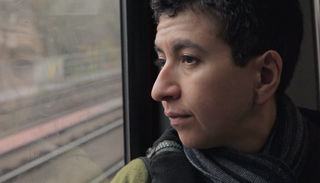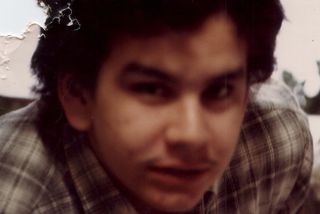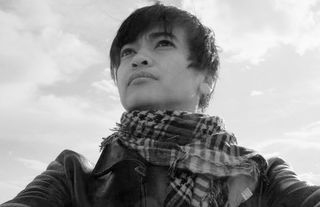Relationships
How Do We Respond to "The Worst Thing"?
A new documentary shows one person's search for healing.
Posted April 14, 2020
Though mostly unheard of by most Americans as recently as ten years ago, restorative practices have gained a foothold in many U.S. schools to such an extent that many of us now associate this term, and to some extent, the older, more narrow term “restorative justice” with a group of kids sitting in a circle passing a talking piece in a clockwise direction as they take turns responding to the same question or prompt.
The Worst Thing, a new documentary by director Desireena Almoradie, reminds us that the values, principles, and practices of restorative justice can be used to respond to the very worst and most painful life experiences.
The Worst Thing follows Kathleen Pequeño as she struggles to heal and find some sense of peace after her brother, a young U.S. soldier stationed in Germany, is killed in 1985 by members of the Red Army Faction (RAF), a left-wing militant group in West Germany that was active in the 1970s and 1980s and officially dissolved in 1998. Pequeño reaches out to a number of former RAF members, initially in the hope of gaining some kind of understanding about what led to her brother’s death and why he was targeted, but we soon learn that this is just a small piece of what she is really longing for, which is to establish some sense of shared humanity with those who were part of the group responsible for her brother’s death.

Pequeño’s search for this humanity is the heart of this film as we slowly learn important bits about her childhood and eventually meet her sister whose point of view and coping response to their brother’s death provides an important counter-narrative and show just how differently two people can respond to the same tragic event. Importantly her presence also raises difficult questions about which conflicts in our own lives are worth engaging and how do we decide. Thinking about the film a few days after watching it, I am curious about this relationship and the questions it raises, but exploring that relationship would be a different film and Almoradie and Pequeño show us just enough of it to give us a glimpse of an important piece of the context without letting that context derail the film.
What sets apart The Worst Thing from many other restorative documentaries is that it doesn’t attempt to provide a linear path to reconciliation and healing. As we watch Pequeño engage with first one former RAF member and then another, we feel moments of connection and see glimpses of the humanity that Pequeño is searching for, but we also see Pequeño’s dissatisfaction and frustration. What ultimately emerges is Pequeño’s courage and perseverance.

The worst things in my own life have not been anything nearly as tragic, but after watching the film, I asked myself: What did I need (what do I still need) to heal from what happened? My answers are similar to what I imagine Pequeño's to be: to better understand the other person(s)' motivations, to rebuild (or build from scratch) strained relationships, to create a different story in myself (and ideally a shared story between us) about what happened, a story that acknowledges and doesn't minimize my pain but that also has room for the internal pain of others as well as for the external pressures that created the conditions for what happened. What I think I need to heal is some trust that our relationship is not defined by the worst thing but rather by what we have done together since.
This sort of project can only be done in collaboration and it is sometimes painful to watch Pequeño reach out and make herself vulnerable, only to find that, at least some of the time, the person on the other side of the table is not quite able to provide the kind of partnership she is looking for. It is to her credit that she keeps trying, again and again.

Some viewers will question the benefits of this perseverance. Some might even conclude that it is not in Pequeño's own interest. And, indeed, it is an individual choice that each of us must ultimately make for ourselves. For Pequeño, there is no question of giving up. Thirty-five years have passed since her brother was killed and she's done a lot of work since then. The relationships she's formed with the RAF members were clearly stimulated by the killing but they are no longer defined by it. And if those relationships are sometimes not everything that Pequeño wants them to be, well, isn't that also true of the closest, most intimate relationships in our lives?
For those interested in the nuances of restorative justice, The Worst Thing shows us glimpses into the dialogues but edits out the facilitation. I don't object to this choice. When restorative justice facilitation is done well, it is practically invisible, as though it is not actually necessary. Indeed, one of the defining characteristics of restorative justice and one of the ways that it differs from mediation is that the transformative power of the dialogue lies in the systemic agreements and in the restorative process rather than in the skill of the facilitator. And of course, it makes sense, as a story-telling device, to edit out everything that interrupts the story.

Nevertheless, as a proponent of restorative justice, I do feel some regret that we see so little of the facilitation. It is possible to have these kinds of conversations without facilitated support but, for many, the facilitation (which includes the preparatory work) is often what creates enough safety and trust for people to be willing to engage and it can also keep the dialogue from getting derailed when things get painful.
There is a part of me that wants people to have a window into what facilitation of restorative dialogue looks like, but that too would be a different film. Almoradie knows what The Worst Thing is—a story of Pequeño's search for humanity after a dehumanizing tragic event. Pequeño's courageous pursuit of this humanity evokes compassion and self-reflection precisely because Almoradie stays true to this story and doesn't try to do more.
For more information about The Worst Thing, winner for Best Documentary at Snowdance Independent Film Festival, email info@worstthingfilm.com and/or visit their website.




